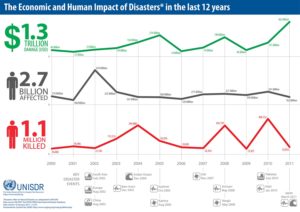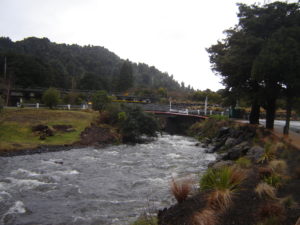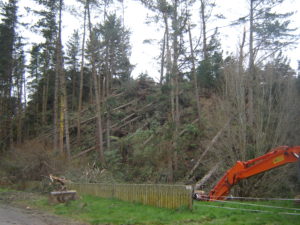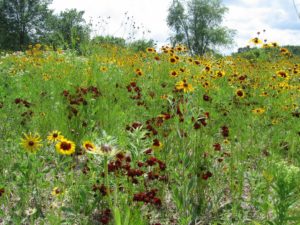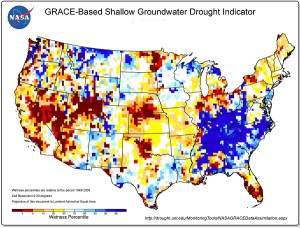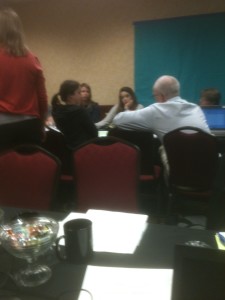The American Planning Association (APA), the organization that employs me as the manager of its Hazards Planning Center, made me proud last week. It took a rare step: It announced its opposition to President Donald Trump’s 2018 budget proposal.
It is not that APA has never taken a position on a budgetary issue before, or never  spoken for or against new or existing programs or regulatory regimes. In representing nearly 37,000 members of the planning community in the United States, most of whom work as professional planners in local or regional government, APA has a responsibility to promote the best ways in which planning can help create healthy, prosperous, more resilient communities and has long done so. It’s just that seldom has a new administration in the White House produced a budget document that so obviously undercuts that mission. APA would be doing a serious disservice to its members by not speaking up on behalf of their core values, which aim at creating a high quality of life in communities of lasting value. That quest leads APA to embrace diversity, educational quality, environmental protection, and economic opportunity. Making all that happen, of course, is a very complex task and the reason that young planners are now largely emerging from graduate programs with complex skill sets that include the use of geographic information systems, demographic and statistical knowledge, public finance, and, increasingly, awareness of the environmental and hazard reduction needs of the communities they will serve. They understand what their communities need and what makes them prosper.
spoken for or against new or existing programs or regulatory regimes. In representing nearly 37,000 members of the planning community in the United States, most of whom work as professional planners in local or regional government, APA has a responsibility to promote the best ways in which planning can help create healthy, prosperous, more resilient communities and has long done so. It’s just that seldom has a new administration in the White House produced a budget document that so obviously undercuts that mission. APA would be doing a serious disservice to its members by not speaking up on behalf of their core values, which aim at creating a high quality of life in communities of lasting value. That quest leads APA to embrace diversity, educational quality, environmental protection, and economic opportunity. Making all that happen, of course, is a very complex task and the reason that young planners are now largely emerging from graduate programs with complex skill sets that include the use of geographic information systems, demographic and statistical knowledge, public finance, and, increasingly, awareness of the environmental and hazard reduction needs of the communities they will serve. They understand what their communities need and what makes them prosper.
The Fiscal Year 2018 White House budget proposal, somewhat ironically titled America First: A Budget Blueprint to Make America Great Again, is in essential ways very short-sighted about just what will sustain America’s communities and make them great. Making America great seems in this document to center on a military buildup and resources to pursue illegal immigrants while eliminating resources for planning and community development. The proposal would eliminate funding for the U.S. Department of Housing and Urban Development’s Community Development Block Grant program, the HOME Investment Partnerships program, and the Choice Neighborhoods Initiative. It also eliminates the Low-Income Heating Energy Assistance Program, which was created under President Ronald Reagan, as well as the Department of Energy’s weatherization assistance program.
It also eliminates the Appalachian Regional Commission, which supports job training in the very areas where Trump irresponsibly promised to restore mining jobs. There is no doubt that hard-hit areas like West Virginia and eastern Kentucky are in serious need of economic development support. Trump’s promise, however, was hollow and reflected a lack of study of the real issues because environmental regulation, which the budget proposal also targets, is not the primary reason for the loss of mining jobs. The mines of a century ago were dangerous places supported by heavy manual labor, but automation reduced many of those jobs long before environmental protection became a factor. Competition from cheap natural gas, a byproduct of the hydraulic fracturing (or fracking) revolution in that industry, has further weakened the coal industry.
No rollback of clean air or climate programs will change all that. What is clearly needed is a shift in the focus of education and job training programs, and in the focus of economic development, to move the entire region in new directions. To come to terms with the complexity of the region’s socioeconomic challenges, I would suggest that the President read J.D. Vance’s Hillbilly Elegy, which deals compassionately but firmly with the deterioration of the social fabric in Appalachian communities. If anything, it will take a beefed up Appalachian Regional Commission and similar efforts to help turn things around for these folks who placed so much faith in Trump’s largely empty promises.
The March 9 issue of USA Today carried a poignant example of the realities that must be faced in producing economic opportunity in the region. The headline story, “West Virginia Won’t Forget,” highlights the problem of uncompleted highways in an area where a lack of modern transportation access impedes growth, focusing specifically on McDowell County, one of the nation’s most impoverished areas. It is hard for outsiders to grasp the realities. In the Midwest, if one route is closed, there are often parallel routes crossing largely flat or rolling land that maintain access between communities. In much of West Virginia, narrow mountain passes pose serious obstacles when roads no longer meet modern needs. It is the difference between the life and death of struggling communities, with those left behind often mired in desperate poverty. When I see a budget and programs from any White House that address these questions, I will know that someone wants to make Appalachia great again.
I say that in the context of a much larger question that also seems to drive much of the Trump budget. You must read the budget blueprint in its entirety, with an eye to questions of community and coastal resilience and climate change, to absorb fully the fact that the Trump administration is at war with any efforts to recognize the realities of climate change or facilitate climate change adaptation. The proposal zeroes out the National Oceanic and Atmospheric Administration’s coastal mapping and resilience grant programs. I will grant in full disclosure that APA, in partnership with the Association of State Floodplain Managers, is the recipient of a Regional Coastal Resilience Grant. For good reason: Our three-year project works with pilot communities in Georgia and Ohio to test and implement means of incorporating the best climate science into planning for local capital improvements. Communities invest billions of dollars yearly in transportation and environmental infrastructure and related improvements, and in coastal areas, ensuring that those investments account for resilience in the face of future climate conditions will save far more money for this nation than the $705,00 investment (plus a 50% match from ASFPM and APA) that NOAA is making in the project. The problem is that you have to respect the voluminous climatological science that has demonstrated that the climate is changing and that a serious long-term problem exists. And it is not just the focus of our singular project that matters. Today’s Chicago Tribune contains an Associated Press article about the race by scientists to halt the death of coral reefs due to ocean warming. The article notes that the world has lost half of its coral reefs in the last 30 years and that those reefs produce some of the oxygen we breathe.
The damage on climate change, however, does not stop with the NOAA budget. The Trump budget also zeroes out U.S. contributions to international programs to address climate change and undermines existing U.S. commitments to international climate agreements.
There is also a failure to take seriously the role of the U.S. Environmental Protection Agency, which would suffer a 31% budget reduction and the loss of 3,200 jobs. Among the programs to be axed is the Great Lakes Restoration Initiative, ostensibly on grounds that, like the Chesapeake Bay programs, it is a regional and not a national priority and therefore undeserving of federal support. That ignores the fact that four of the five lakes are international waters shared with Canada. It also ignores the history of the agency and its 1970 creation under President Richard Nixon, largely as a result of the serious water pollution problems experienced at the time.
 Younger readers may not even be aware of some of this. But I grew up before the EPA existed; I was a college student environmental activist when this came about. When I was in junior high school several years earlier, our class took a field trip aboard the Good Time cruise, which escorted people down the Cuyahoga River to the shores of Lake Erie in Cleveland. The river was such an unspeakable industrial cesspool that one classmate asked the tour guide what would happen if someone fell overboard into the river. Matter-of-factly, the guide responded, “They would probably get pneumonia and die.” We have come a long way, and for those of us who understand what a difference the EPA has made, there is no turning back. I am sure that White House staffers would say that is not the point, but to me it is.
Younger readers may not even be aware of some of this. But I grew up before the EPA existed; I was a college student environmental activist when this came about. When I was in junior high school several years earlier, our class took a field trip aboard the Good Time cruise, which escorted people down the Cuyahoga River to the shores of Lake Erie in Cleveland. The river was such an unspeakable industrial cesspool that one classmate asked the tour guide what would happen if someone fell overboard into the river. Matter-of-factly, the guide responded, “They would probably get pneumonia and die.” We have come a long way, and for those of us who understand what a difference the EPA has made, there is no turning back. I am sure that White House staffers would say that is not the point, but to me it is.
I am sure that, as with other agencies, one can find duplicative programs to eliminate, and ways to tweak the budget for greater efficiencies. That should be a goal of any administration. But in the broad sweep of the damage this budget proposes, I find it impossible to discern that motive in the butcher cuts the White House embraces. It is time to contact your Senators and U.S. Representatives. Ultimately, the budget is up to Congress, which must decide whether the new priorities make sense. My personal opinion is that they are short-sighted and ill-informed.
Jim Schwab

